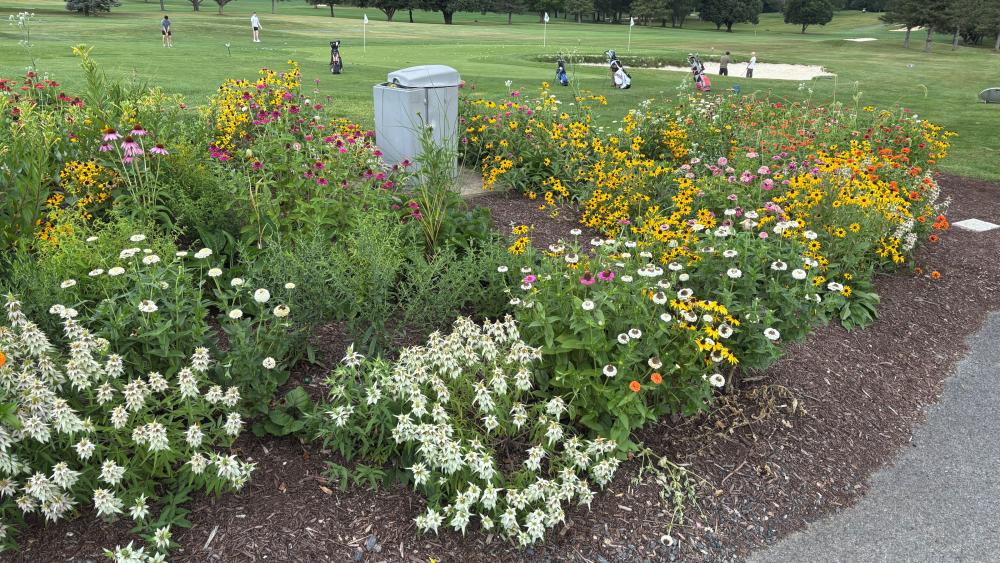UNIVERSITY PARK, Pa. — Three once-overgrown planting beds at the Penn State Golf Courses have been transformed into colorful pollinator gardens, thanks to a hands-on biology course that connects students with the campus community and with Penn State’s sustainability goals.
“Before, these areas were filled with tall ornamental grasses that just covered everything,” said Joe Hughes, PGA general manager of the golf courses. “Now, they’re beautiful beds that catch people’s attention as soon as they walk toward the clubhouse.”
Hands-on learning
The project stems from BIO 497, a project-based course taught by Denise Woodward, teaching professor of biology in the Eberly College of Science. The class project is also part of Penn State’s Living Labs program, helping students connect their academic work to sustainability challenges on Penn State campuses.
“Sometimes students struggle to see a correlation between the concepts they are learning in the classroom and their real-world applications,” Woodward said. “The opportunity to do a hands-on project-based course allows them to see the connections.”
Students grow native plants from seed in the Buckhout Greenhouse, design landscape layouts, meet with stakeholders and develop educational materials to teach visitors about the ecological role of native plants. The course explores biodiversity, ecological corridors and sustainability communication, inspired by entomologist Douglas Tallamy’s Homegrown National Park concept.
“The students learned about growing plants, designing the beds, and planting them, as well as the best ways to communicate to the public about what is there and why,” said Krista Bailey, associate director for campus sustainability in Penn State Sustainability, who worked to facilitate the partnership between the class and the golf courses.
Bailey said this collaboration exemplifies Penn State’s Living Labs model, which turns campus spaces into test beds for sustainability innovation.
“These kinds of projects let students apply lessons from biodiversity and ecological design directly on campus,” they said. “They’re learning while improving the University’s sustainability performance. That’s what a Living Lab is all about. The golf course planting is an example of a successful Living Lab project because it has helped the students apply their classroom lessons, reduced costs for the golf course, increased the ecosystem services provided by golf course plantings, and enhanced the enjoyment of golf course visitors.”
A new way to learn
For many students, the golf course project was a refreshing change from traditional coursework.
“This project was so valuable to my education mainly because in college, you rarely get the chance to take classes that are hands-on,” said Lily McComsey, who was a third-year biology major during the project and is now pursuing a master’s degree in secondary education. “As someone who struggles in a typical learning environment, getting to learn about native plants and the positive impact they have on our environment through this project was such an incredible experience.”
McComsey said she was amazed by how fast the gardens came to life.
“We planted the garden in late April, and when I went back over the summer, I was shocked,” she said. “The plants had grown so much in just a couple of months, and the area was full of bees, insects — even bunnies and squirrels.”
Community collaboration
Hughes said the partnership between the golf course staff and Woodward’s class impressed both golfers and employees.
“These are three areas that get used often,” Hughes said. “When folks can’t get out on the course, they come to the range. Now, when they walk from the parking lot to the clubhouse, they pass these vibrant gardens that students built from scratch.”







